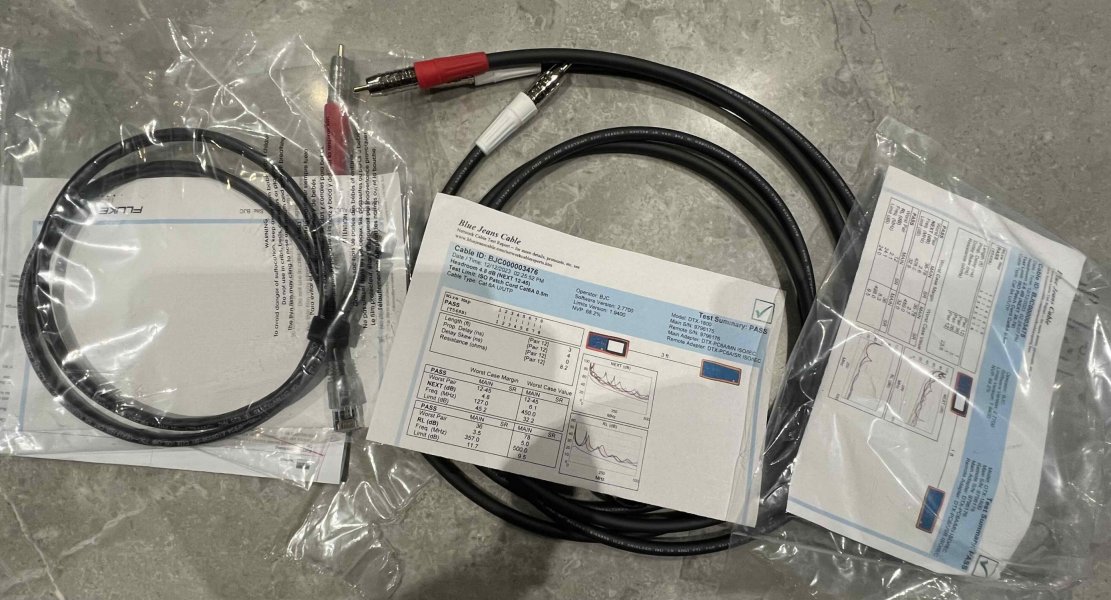I guess most are familiar with the fable of the Philosophers Stone…..essentially the tale of the ancient Alchemists’ search for a stone (ingredient) that would turn base metals into Gold. Well apparently QSA-Lanedri have found the audiophile equivalent, which I believe is worthy of some discussion.
I have been an audiophile for over 50 years, with the last 4 spent developing a dedicated digital streaming system. Up to 4 years ago my experience with digital was that it consistently proved inferior to analog, but thanks to the inputs from 3 fellow audiophiles (DIY gurus) and 2 hi-fi designers that has now changed. Having implemented a number of their suggestions I came to very much rely on their inputs and advice, so when 2 of them began messaging and posting about QSA fuses and later about QSA-Lanedri cables, I immediately became interested. Both these guys have lucrative careers while hi-fi is their passion, so my belief in their findings is 100%. Neither has any financial or business relationships with QSA-Lanedri and get no financial reward for promoting their products. My conclusion is that QSA-Lanedri really have discovered something remarkable with the potential to revolutionise the hi-fi industry. This thread is intended to provide a place to discuss actual experiences with the products, to discuss your take on their perceived value and to ‘speculate/hypothesise’ on what the process may be that brings such spectacular results in terms of improved sound quality. It is based on the assumption that the products do what they claim and seeks to come up with possible ways of how they achieve this.
Let me provide a few observations to get things started
1. The ‘treatment’ is applied to fully confected cables and plugs, so must be fully compatible with all the soft plastics used in plug and cable manufacture
2. The treatment is not patented, so either it’s extremely unlikely to be discovered and therefore not worth the patent costs (which are considerable) or the treatment itself isn‘t patentable ie. Isn’t non-obvious or novel
3. The treatment can be applied to any cable or plug so isn’t product dependent
4. There appears to be no outward signs of any modifications to any treated products
5. There’s a scale of products, so it seems the process can be either tuned, adjusted or dosed to modify/enhance the effect on the treated cable
6. Listeners have observed that the effect of the treatment is greater on less pure metals i.e metals with greater level of impurities
7. Listeners have observed that the closer the treated product is to the ‘end point’ the greater the effect i.e downstream untreated conductors reverses some of the benefit
8. Its claimed that over 22 years of R&D went into the process but my own key-word searches revealed no related or relevant publications, so its likely the R&D was performed either in a private or commercial capacity rather than as part of a research institution e.g university that depends on publishing results to justify its funding.
9. Humans have studied the structures and behaviours of metals and their related molecules and atoms for well over a century, but not as they apply to their ‘sonic qualities and attributes’ .
10. QSA- Lanedri claims that the treatment occurs at the ‘molecular or atomic level‘ and is ‘quantum‘ in nature
11. QSA-Lanedri list the following technologies as key attributes:
- Metal Molecular Activation Technology
- Musical Metal Molecule Alignment Technology
- Skin Deep Compensation Technology
12. The cables themselves start out life as complete $50 - $100 Blue Jeans and Iconocast cables that following treatment sell for $2,500 - $6,000. Power cables are based on Sablon Prince ($3,250) and Sablon King ($3,950) which following treatment sell for $6,000 - $9,000 and $8,000 - $12, 000 respectively.
13. Iconoclast and /Blue Jeans cables are themselves made from bulk off the reel Belden and Canare cable
14. Listeners have observed that the greater the metal content of the cables and plugs, the greater the effect of the treatment
Being relatively new to this forum I didn't appreciate that paid-for threads are holy ground. I got told off. Sorry!
Just a few more things:
1. Steven Tsang's Linkedin page led me to his university paper - which was on digital processing - in 1997. So no evidence of any academic credentials in metallurgy, but he's obviously a clever chap.
2. Steven Tsang has operated Lieder International since about 2004 (I forget). It is an audio dealer and distributor. Brands it has dealt with are Akiko from 2015 - who do audiophile fuses - make your own mind up what that resulted in.
New Dealer in Hong Kong: LIEDER INTERNATIONAL COMPANY Room1311b, 13/F, BLK,. Kai Tak FTY BLDG. 99-101 King Fuk ST., San Po Kong, KLN,.HK TEL: (852) 2717-0774 FAX: (852) 3012-1271

www.facebook.com
3. The QSA YouTube channel is here:
4. Go into "Shorts" and you will see the QSA process in action via a little white box and some egg timers.
Enjoy the videos and music you love, upload original content, and share it all with friends, family, and the world on YouTube.

www.youtube.com
5. If you look at the timestamps of some of the "before" and "after" videos of certain devices, the process was only a matter of a few minutes.
6. Anas' role is clearly marketing and distribution, he seems to have a good way with that. He's got the spin down 100%. He's a MiFid11 specialist. No science background listed.
7. Look at the small print. It is states that there is no option to return the Sablon based cables (Spectra).

Presumably because Sablon won't refund QSA-L.
This is contrary to EU and UK law, that gives the consumer a 14-day cooling off period to return a product, no questions asked.
How to claim the 2-year guarantee for EU purchases, get a repair, replacement or refund, how to cancel orders made outside shops (online, by phone, mail order).

europa.eu
QSA-L cannot argue the exceptions rule as they refer to stock items. They could argue the exceptions rule is you ordered a non-standard length.
8. The Belden cables are standard Belden cables with Belden connections. This is a good thing as Belden make the point that the connection is critical. Belden confirmed to me that they do not make special cables for anyone. They do OEM connections and labelling like others.
9. Belden ethernet cables come with individual fluke tests. They either pass or fail. The test meter costs about $4,000. Galen Gareis tells me many audiophile ethernet cables fail, but still work because the test threshold far exceeds the needs of audio. As far as he was concerned nothing can be done afterward to make it better.
I buy from Belden. Got 3 ethernet and a pair of RCAs this week, order to delivery from Seattle to the UK in 3 days. $125 delivered.
I don't suppose what QSA-L do is uncommon in commerce. If they have discovered the Philospoher's Stone, then my suggestion would be to patent it and license it to other manufacturers. Vastly more money in doing that instead of flogging one-off cables. If they have not, it may not last long.











